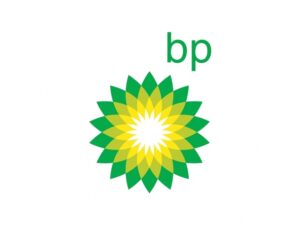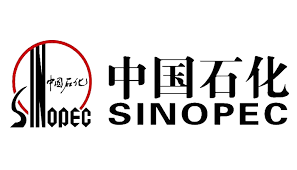Saudi Aramco, officially the Saudi Arabian Oil Company, is a name synonymous with global energy. It’s not just a hyperbole – Aramco holds the title of the world’s largest oil producer, boasting the highest daily output of any oil company. But Aramco’s significance goes beyond its production muscle. It’s a company steeped in history, a key player in the global energy market, and a major force shaping the future of energy.
Aramco’s story began in 1933 with a handshake between the Saudi Arabian government and the Standard Oil Company of California. This agreement sparked a decades-long journey of exploration and discovery. The first oil wouldn’t flow commercially until 1938, but once it did, Aramco’s growth was nothing short of phenomenal. By 1949, production had reached a staggering 500,000 barrels per day, necessitating the construction of the world’s longest pipeline at the time, the Trans-Arabian Pipeline, to efficiently transport this newfound wealth.
Over the years, Aramco’s ownership structure evolved. Initially a partnership with American companies, the Saudi government steadily increased its control, culminating in a full takeover in 1988. Today, Aramco remains a state-owned enterprise, a cornerstone of the Saudi economy.
Aramco’s influence extends far beyond Saudi Arabia’s borders. Its vast reserves, estimated at over 270 billion barrels, account for a significant portion of the world’s total. This translates to Aramco being a major supplier of crude oil to countries across the globe, making it a critical player in the delicate dance of global energy security.
However, Aramco is not resting on its laurels as the world’s oil king. The company recognizes the need for a sustainable future and is actively investing in renewable energy sources and technological advancements to reduce its environmental impact. While oil remains its core business, Aramco is taking concrete steps to navigate the energy transition and secure its place in the evolving energy landscape.
In conclusion, Saudi Aramco is more than just an oil giant. It’s a historical force that has shaped the global energy market for decades. As the world grapples with the challenges of energy security and sustainability, Aramco’s future actions will undoubtedly play a significant role in determining the course of global energy for years to come.
Top Competitors and Alternatives of Aramco
Aramco, or Saudi Arabian Oil Company, is one of the world’s largest integrated energy and chemical companies. Its primary focus is on oil exploration, production, refining, distribution, marketing, and petrochemical manufacturing. When discussing its competitors and alternatives, it’s essential to consider companies operating within similar sectors or offering similar products and services. Here are some of Aramco’s top competitors and alternatives:
1. ExxonMobil

Website – https://corporate.exxonmobil.com/
ExxonMobil and Saudi Aramco are both major players in the global oil and gas industry, making them direct competitors. While they collaborate on some projects, they also vie for market share and influence in several key areas.
- Oil Production: Aramco is the world’s largest oil producer by a significant margin, pumping out over five times more oil per day (12 million barrels per day) than ExxonMobil (2.4 million barrels per day). This immense production capacity gives Aramco a major advantage in terms of supplying crude oil to refineries worldwide.
- Refining and Marketing: Both companies are integrated oil and gas firms, meaning they operate across the entire value chain – from exploration and production to refining, transportation, and retail sales. This puts them in direct competition for customers at gas stations and for contracts to supply refined products like gasoline and diesel.
- Technological Innovation: Both companies invest heavily in research and development, aiming to improve efficiency in oil extraction, refining processes, and even exploring alternative energy sources. Here, they compete to develop new technologies that will give them an edge in a constantly evolving energy landscape.
| Competitive Factor | ExxonMobil | Aramco |
|---|---|---|
| Oil Production (barrels per day) | 2.4 million | 12 million |
| Refining and Marketing | Global network of refineries and gas stations | Strong presence in Asia and the Middle East |
| Technological Innovation | Focus on efficiency and exploration | Investments in renewables and alternative energy |
While ExxonMobil may not match Aramco’s production volume, it remains a formidable competitor with a global reach and a strong focus on technological advancement. Both companies will likely continue to vie for dominance in the oil and gas industry for years to come.
2. Royal Dutch Shell

Website – https://www.shell.com/
Royal Dutch Shell and Saudi Aramco are major competitors in the global energy market, particularly in the downstream sector encompassing refining, marketing, and petrochemicals. While they don’t always directly clash in oil production, their focus on downstream activities creates competition for market share and influence.
- Refining and Marketing: Shell boasts a vast global network of refineries and gas stations, reaching a wider customer base compared to Aramco’s strength concentrated in Asia and the Middle East. This extensive network allows Shell to capture a significant share of the market for refined products like gasoline and petrochemicals.
- Natural Gas: Both companies are major players in the liquefied natural gas (LNG) market. They compete to secure gas supplies, develop LNG infrastructure, and attract customers for this cleaner-burning fuel.
- Renewable Energy: As the world transitions towards a low-carbon future, both Shell and Aramco are investing in renewable energy sources like solar and wind power. This competition is shaping the future of the energy landscape as they strive to develop sustainable solutions.
| Competitive Factor | Shell | Aramco |
|---|---|---|
| Refining & Marketing | Extensive global network | Strong presence in Asia & Middle East |
| Natural Gas (LNG) | Major player in LNG market | Growing LNG presence |
| Renewable Energy | Investments in solar & wind power | Exploring renewable energy options |
Despite Aramco’s immense oil production, Shell’s well-established downstream network and diversification efforts make it a strong competitor. As the energy sector evolves, their competition is likely to extend into the realm of cleaner energy solutions.
3. BP

Website – https://www.bp.com/
BP (British Petroleum) and Saudi Aramco are major integrated energy companies competing across various segments of the industry. While they might not directly compete in every area, their strategies and goals create a competitive dynamic.
- Oil & Gas Exploration and Production: Both companies are major players, although Aramco holds a significant advantage in terms of crude oil production volume (12 million barrels per day vs 1 million barrels per day). However, BP has a wider geographical reach, exploring and producing oil and gas in diverse locations worldwide.
- Refining and Marketing: Both BP and Aramco operate a network of refineries and gas stations, competing for customers in the downstream sector. BP has a strong presence in Europe and North America, while Aramco focuses on Asia and the Middle East.
- Renewable Energy Transition: Recognizing the shift towards a low-carbon future, both BP and Aramco are investing in renewable energy sources like solar and wind power. They compete to develop new technologies, secure partnerships, and establish themselves as leaders in the transition to a more sustainable energy mix.
| Competitive Factor | BP | Aramco |
|---|---|---|
| Oil & Gas Production | Strong global presence, lower volume | Highest production volume, concentrated geographically |
| Refining & Marketing | Extensive network in Europe & North America | Strong presence in Asia & Middle East |
| Renewable Energy | Investments in solar, wind, and biofuels | Exploring and investing in renewables |
While Aramco boasts the largest oil production, BP’s global presence, refining network, and commitment to renewables make it a significant competitor. Both companies are likely to continue competing as the energy industry undergoes a significant transformation.
4. Chevron

Website – https://www.chevron.com/
Chevron and Saudi Aramco are both integrated oil and gas giants competing across the entire energy value chain, from exploration and production to refining and marketing. While they have some geographical overlap, their core strengths and areas of focus create a competitive dynamic.
- Exploration and Production: Both companies actively explore for oil and gas reserves worldwide, but Aramco holds a clear advantage in terms of current production volume. However, Chevron possesses a strong presence in the Americas and Asia-Pacific regions, giving it a strategic edge in these growing markets.
- Refining and Marketing: Both Chevron and Aramco operate a network of refineries and gas stations around the world, vying for customers in the downstream sector. Chevron has a significant presence in North America and Asia, while Aramco focuses on the Middle East and increasingly expands into Asia. This creates direct competition for market share in refined products like gasoline and petrochemicals.
- Technological Innovation: Both companies invest heavily in research and development, aiming to improve efficiency in oil extraction, refining processes, and even exploring alternative energy sources. Here, they compete to develop new technologies that will give them an edge in a constantly evolving energy landscape.
| Competitive Factor | Chevron | Aramco |
|---|---|---|
| Exploration & Production | Strong presence in Americas & Asia-Pacific | Highest production volume, concentrated geographically |
| Refining & Marketing | Extensive network in North America & Asia | Strong presence in Middle East, expanding into Asia |
| Technological Innovation | Focus on efficiency and exploration | Investments in renewables and alternative energy |
While Aramco dominates in terms of current production, Chevron’s global reach, refining network, and focus on innovation make it a significant competitor. The competition between these two giants is likely to intensify as the energy industry grapples with geopolitical shifts and the transition towards a lower-carbon future.
5. TotalEnergies

Website – https://totalenergies.com/
TotalEnergies and Saudi Aramco, though sometimes collaborators, are also significant competitors in the global energy market. While they have a unique dynamic due to joint ventures, their overall strategies and areas of focus create a competitive environment.
- Oil and Gas Production: Aramco holds a clear lead in crude oil production volume, dwarfing TotalEnergies’ output. However, TotalEnergies has a more geographically diverse portfolio, with exploration and production activities spread across multiple continents.
- Downstream Activities and Renewables: Both companies operate in refining, marketing, and petrochemicals, competing for market share. TotalEnergies is actively pushing into renewable energy sources like solar and biofuels, while Aramco is also making strides in this area. This competition will likely become more prominent as the world transitions towards a low-carbon future.
- Strategic Partnerships: Interestingly, TotalEnergies and Aramco collaborate on various projects, such as a joint venture refinery in Saudi Arabia. These partnerships create a complex dynamic, with competition co-existing alongside cooperation.
| Competitive Factor | TotalEnergies | Aramco |
|---|---|---|
| Oil Production | Lower volume, geographically diverse | Highest production volume, concentrated geographically |
| Downstream & Renewables | Refining, marketing, petrochemicals, growing renewables focus | Refining, marketing, petrochemicals, increasing emphasis on renewables |
| Strategic Partnerships | Collaborate on some projects | Collaborate on some projects, primarily focus on independent growth |
Despite the production disparity, TotalEnergies’ global presence, downstream activities, and commitment to renewables make it a relevant competitor. The nature of their competition might evolve as the energy landscape transforms, with collaboration potentially increasing in areas like developing sustainable solutions.
6. Rosneft

Website – https://www.rosneft.com/
Rosneft, the largest oil company in Russia, and Saudi Aramco, the global oil production leader, are competitors primarily focusing on the oil and gas sector. While not direct geographical competitors everywhere, their strategies and areas of influence create a competitive dynamic, particularly in certain regions.
- Oil Production and Reserves: Rosneft boasts significant oil reserves and production output, making it a major player in the global oil market. However, Aramco outpaces Rosneft in terms of current production volume. Both companies aim to secure long-term contracts and influence oil prices, which can put them at odds in negotiations with consuming nations.
- Downstream Activities: Rosneft has a growing refining and marketing network, but primarily focuses on Russia and neighboring countries. Aramco, on the other hand, has a wider downstream presence, particularly in Asia. This limits direct competition in some areas but creates a race to capture market share in others.
- Geopolitical Landscape: Rosneft’s close ties to the Russian government add a complex layer to the competition. Sanctions and political tensions can influence oil markets and Rosneft’s ability to compete on a global scale compared to Aramco, which is not subject to the same constraints.
| Competitive Factor | Rosneft | Aramco |
|---|---|---|
| Oil Production & Reserves | Major producer, significant reserves | Highest production volume globally |
| Downstream Activities | Growing network, focused on Russia & CIS countries | Wider downstream presence, strong in Asia |
| Geopolitical Landscape | Close ties to Russian government | Saudi state-owned company |
Despite the production volume gap, Rosneft’s strong position in Russia and its growing downstream activities make it a relevant competitor, especially in Eurasia. The geopolitical landscape can significantly influence their competitive dynamic.
7. Sinopec

Website – http://www.sinopecgroup.com/
Sinopec, the Chinese state-owned energy giant, and Saudi Aramco are major competitors in the oil and gas industry, particularly in Asia. While they don’t directly compete in every area, their dominance in their respective regions and focus on similar sectors create a competitive environment.
- Refining and Marketing: Both Sinopec and Aramco are integrated energy companies with vast refining and marketing networks. Sinopec reigns supreme in China, the world’s largest oil importer, while Aramco holds a strong position in the Middle East and increasingly expands into Asia. This creates a direct clash for market share in refined products like gasoline and petrochemicals across the continent.
- Natural Gas: Both companies are actively involved in the liquefied natural gas (LNG) market. They compete to secure gas supplies, develop LNG infrastructure, and attract customers, especially in the growing Asian market.
- Petrochemical Expansion: Both Sinopec and Aramco are expanding their petrochemical businesses, which are crucial for producing plastics and other chemical products. This competition intensifies as they vie for dominance in the lucrative Asian petrochemical market.
| Competitive Factor | Sinopec | Aramco |
|---|---|---|
| Refining & Marketing | Dominant in China, expanding in Asia | Strong in Middle East, expanding into Asia |
| Natural Gas (LNG) | Major player in LNG market, focus on Asia | Growing LNG presence, targeting Asian market |
| Petrochemicals | Expanding petrochemical business in Asia | Expanding petrochemical business globally |
While Aramco boasts the world’s largest oil production, Sinopec’s dominance in refining and marketing within Asia, particularly China, makes it a significant competitor. Their competition is likely to grow fiercer as both companies strive to capture a larger share of the ever-growing Asian energy market.
These companies are just a few examples of Aramco’s competitors and alternatives in the oil and gas industry. The competition between them is often influenced by factors such as geopolitical dynamics, technological advancements, regulatory environments, and market demand fluctuations.
Also Read: Top Chevron Competitors and Alternatives
To read more content like this, subscribe to our newsletter



